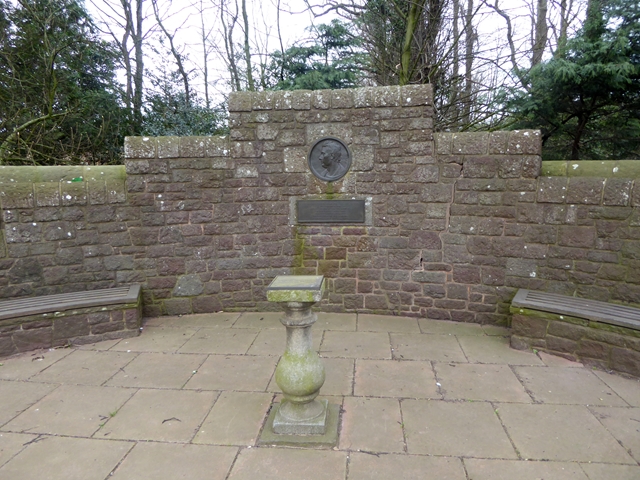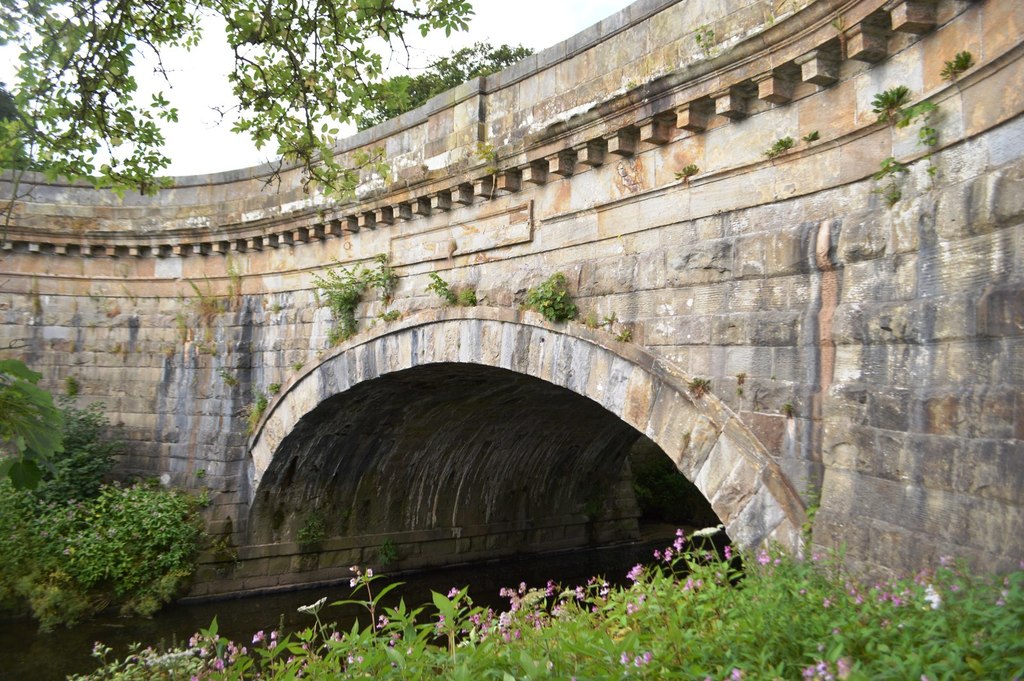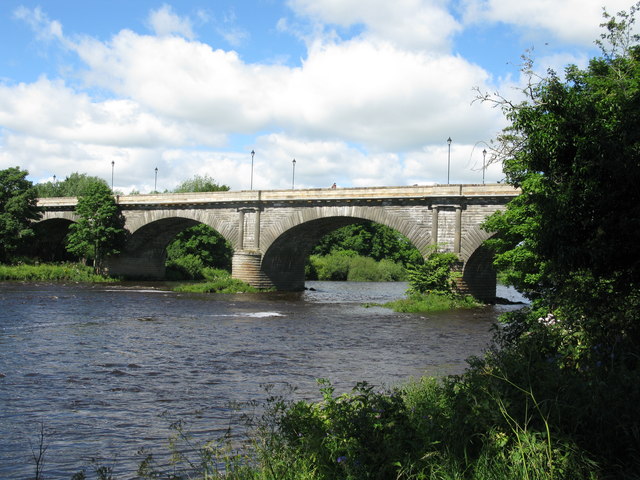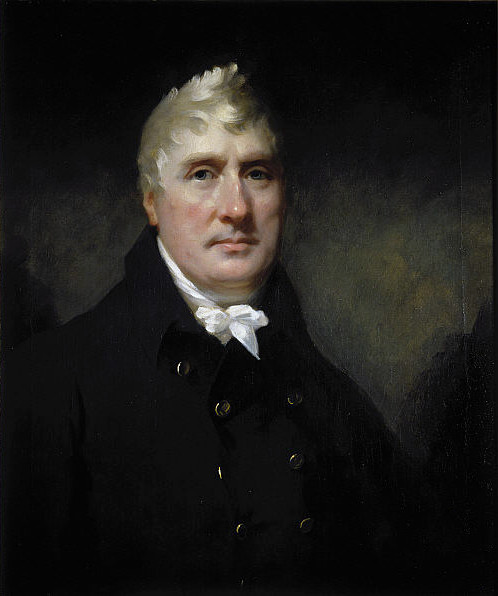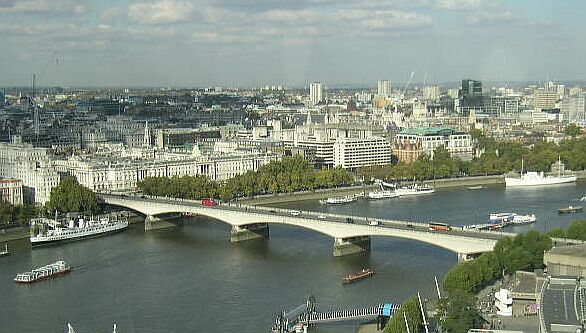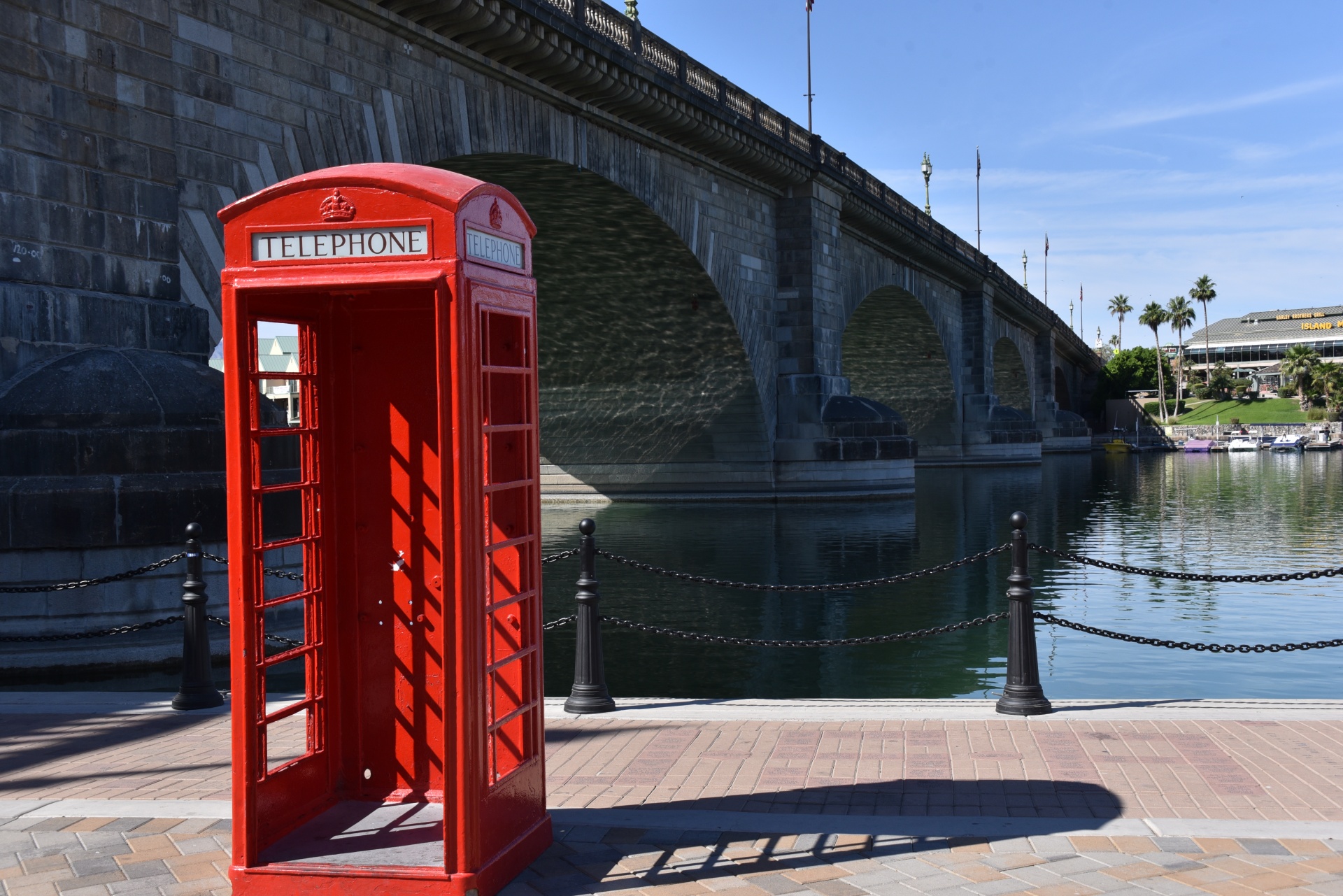John Rennie
|
This memorial to John Rennie (located beside the B1377 - formerly the A1 - to the east of East Linton) includes an inscription, which reads, "This memorial to John Rennie (1761-1821) Civil Engineer was erected in 1936 and relocated at this site in 1981 by: the East Lothian Antiquarian and Field Naturalists Society, the Institution of Civil Engineers, Sir Robert McAlpine and Sons Limited." |
Contents |
[edit] Introduction
On 29 June 2021 (the 200th anniversary of John Rennie's death), ICE Past President Gordon Masterton paid tribute to the engineer and the durability of his engineering creations, touching on his character and the contemporary esteem in which he was held.
[edit] Early days
John Rennie's (1761-1821) work on canals, aqueducts, bridges and dockyards mark him as one of the greatest engineers of his age, on a par with his contemporary Thomas Telford.
Rennie was born near East Linton, 20 miles east of Edinburgh. He played truant from school to watch Andrew Meikle, the local millwright and inventor of the threshing machine, and began to work there when he was 12, while continuing his education.
Rennie studied at the University of Edinburgh, closest to his home but fortuitously, the leading academic centre for natural philosophy, practical chemistry and geology – the best available formative education for an engineering career before any courses in 'engineering' existed in the United Kingdom.
One of his professors was John Robison, a close friend of James Watt, who gave Rennie a glowing reference. Watt appointed Rennie as the London agent for Boulton & Watt, initially to supervise the fabrication and erection of a steam engine for the Albion Mill, a task he executed with flair.
When he was 29, Rennie set up his own engineering consultancy business. Although his reputation had been established in mechanical engineering with Boulton & Watt, the bigger opportunities lay in civil engineering infrastructure.
|
The River Wyre aqueduct over the Lancaster Canal was built to the design of John Rennie and opened in 1797. |
Rennie's first works were the Lancaster Canal, the Kennet & Avon Canal, the Royal Military Canal, and improving the drainage of the Norfolk fens. He also designed bridges in stone and cast iron with daringly wide arches - like Kelso Bridge, Waterloo Bridge, Southwark Bridge and London Bridge, projects which were overseen by his son John after his death.
|
Kelso Bridge, Kelso, is sometimes known as Rennie's Bridge after the engineer John Rennie. It was built between 1800-1803 replacing a previous structure. It is a Category A listed building and carries the A699 across the River Tweed into the centre of Kelso. |
Rennie's docks and harbours included Grimsby, Leith and the London and East India Docks. His largest projects were for the Royal Navy as it built the infrastructure preparing for a century of world domination, including Sheerness Dockyard and the great breakwater at Plymouth. Rennie also gave advice on novel maritime structures such as steam-powered dredgers, diving bells and the Bell Rock Lighthouse.
[edit] What was he like as a person?
Rennie married Martha Mackintosh in 1790. They had nine children, but Martha died in 1806 soon after the last child was born. Five children survived until Rennie’s death in 1821. The two eldest, George and John, became well known engineers in their own right, learning their profession by working closely with their father. John Rennie 'the elder' was an imposing figure – 6ft 4in tall, and 15 stone, but suffered badly from rheumatism.
|
Portrait of John Rennie 'the elder' painted by Henry Raeburn. |
By contemporary accounts, Rennie lived to work and had few other interests. His biographer, Samuel Smiles said: “Work was with him not only a pleasure – it was almost a passion.” However, he was a book collector; he would commission any friends visiting Paris to purchase rare texts for his collection. The only holiday we know he took was with James Watt to France in 1816, the year after the Battle of Waterloo, but much of that time was spent inspecting the dock and harbour works commissioned by Napoleon.
Rennie operated with high integrity and had ethical principles that influenced many others. His character was described by a contemporary: "What I liked about Rennie was his severe truthfulness."
Samuel Smiles said: “Mr Rennie established a reputation for truthfulness, honesty and uprightness, not less honourable and exalted than his genius as an engineer was illustrious… He was a man of powerful and equally balanced mind – not so clever, as profound; not brilliant, but calm, serene, and solid, like one of his own structures.”
Rennie's death in 1821 was felt at the national level: he received a public funeral and was laid to rest in St. Paul’s Cathedral.
|
This image shows Waterloo Bridge over the Thames, as seen from the London Eye. |
Waterloo Bridge was considered his masterpiece, described by a contemporary as "perhaps the finest large masonry bridge ever built in this or any other country". The Italian sculptor Canova called it "the noblest bridge in the world" and said that "it is worth going to England solely to see Rennie’s bridge".
Rennie was a member of the Society of Civil Engineers, which later became the Smeatonians, from 1785 until his death. His image was one of seven carved portraits on the outside of the original ICE headquarters.
Rennie and Thomas Telford were rivals in their careers, and apparently did not have a warm relationship, but today Rennie’s name is one of 16 inscribed around the ICE’s Thomas Telford Lecture Theatre. Whatever their differences in life, they at least share that recognition in death.
|
Rennie design for "new" London bridge was selected over that of his rival, Thomas Telford. With his son's assistance, the design was completed in 1831, 10 years after the elder Rennie's death. In 1968, Rennie's London bridge was sold to an American entrepreneur and relocated to Lake Havasu City, Arizona. |
Rennie’s greatest monuments are his projects, many surviving still, as tributes to the genius of his foresight in designing for durability, and the longevity of his structures has surely benefited their carbon footprint dramatically.
[edit] Get involved
'Engineering Foresight from Hindsight', the ICE’s collaborative forum of PHEW, archives, journals, CARE Panel and education and outreach, is planning a number of commemorative activities in the bicentenary of Rennie’s death, including a comprehensive mapping of all his projects. If you have an idea for a local project or how to promote interest in Rennie’s life and achievements, contact carol.morgan@ice.org.uk.
This article originally appeared on The Civil Engineer portion of the ICE website under the headline, 'John Rennie - calm, serene and solid, an engineer of "severe truthfulness"'. It was written by Gordon Masterton, ICE Fellow and Past President and published on 29 June 2021.
--The Institution of Civil Engineers
[edit] Related articles on Designing Buildings
IHBC NewsBlog
Purcell’s guidance on RAAC for Listed Buildings in England & Wales
The guidance specifically focuses on Reinforced Autoclaved Aerated Concrete (RAAC) in listed buildings.
IHBC Membership Journal Context - Latest Issue on 'Hadrian's Wall' Published
The issue includes takes on the wall 'end-to-end' including 'the man who saved it'.
Heritage Building Retrofit Toolkit developed by City of London and Purcell
The toolkit is designed to provide clear and actionable guidance for owners, occupiers and caretakers of historic and listed buildings.
70 countries sign Declaration de Chaillot at Buildings & Climate Global Forum
The declaration is a foundational document enabling progress towards a ‘rapid, fair, and effective transition of the buildings sector’
Bookings open for IHBC Annual School 12-15 June 2024
Theme: Place and Building Care - Finance, Policy and People in Conservation Practice
Rare Sliding Canal Bridge in the UK gets a Major Update
A moveable rail bridge over the Stainforth and Keadby Canal in the Midlands in England has been completely overhauled.
'Restoration and Renewal: Developing the strategic case' Published
The House of Commons Library has published the research briefing, outlining the different options for the Palace of Westminster.
Brum’s Broad Street skyscraper plans approved with unusual rule for residents
A report by a council officer says that the development would provide for a mix of accommodation in a ‘high quality, secure environment...
English Housing Survey 2022 to 2023
Initial findings from the English Housing Survey 2022 to 2023 have been published.
Audit Wales research report: Sustainable development?
A new report from Audit Wales examines how Welsh Councils are supporting repurposing and regeneration of vacant properties and brownfield sites.







